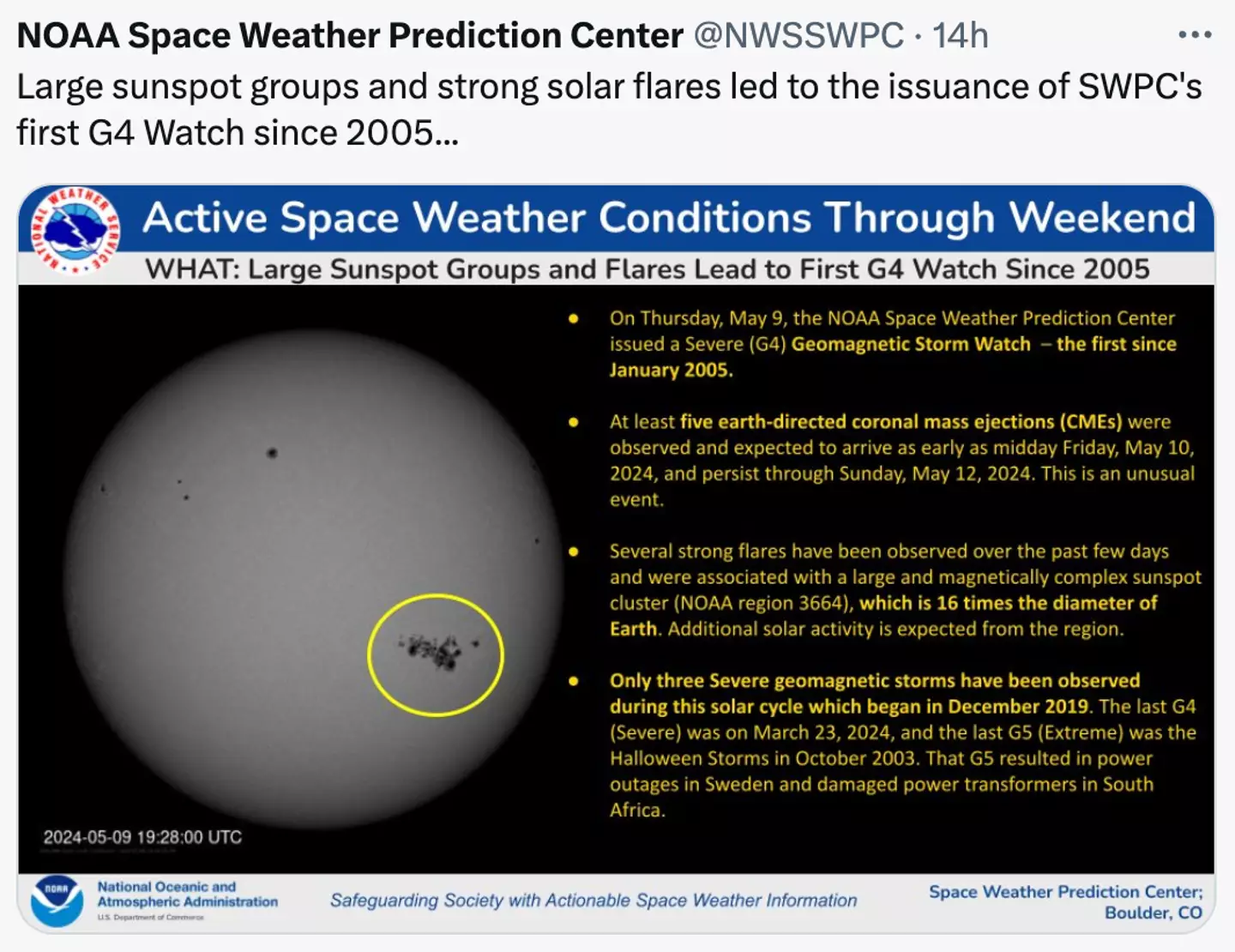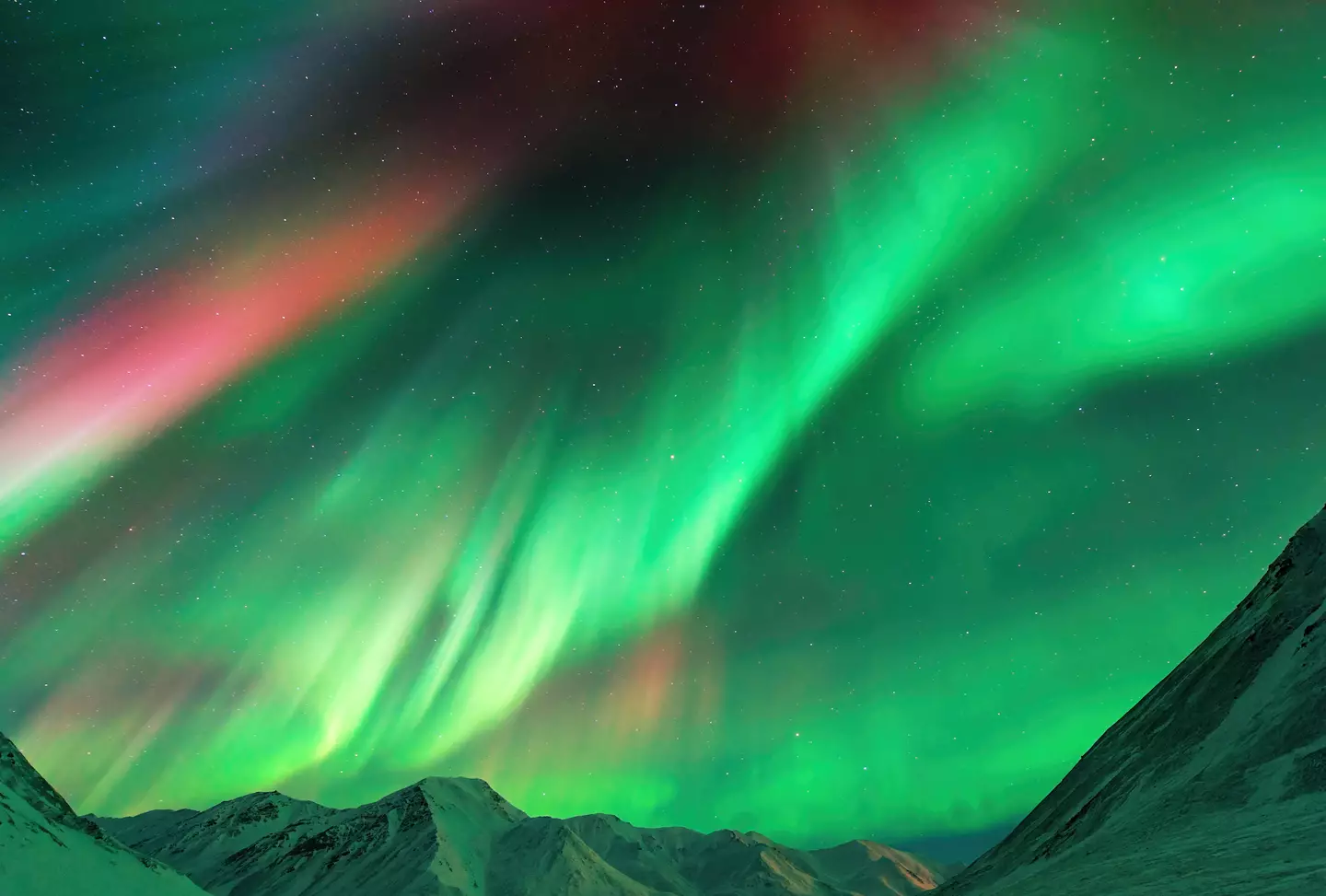
The National Oceanic and Atmospheric Administration (NOAA) has warned of technological blackouts amid a 'severe' solar storm.
The agency shared the warning this week as two massive sunspots have merged and ejected multiple solar flares, two of which have been categorized as X-class - meaning they're in the largest category.

The flares, known as a coronal mass ejections (CME), expand as they travel through space and are expected to arrive late today (10 May) or early tomorrow.
Advert
As the sunspots merged, the NOAA upgraded its geomagnetic solar storm watch from a level 3, which is considered 'moderate', to a level 4, which is 'severe'.
The NOAA noted that the 'severe' level is 'very rare', saying: "This is an unusual event."
"NOAA’s Space Weather Prediction Center (SWPC)- a division of the National Weather Service – is monitoring the sun following a series of solar flares and coronal mass ejections (CMEs) that began on May 8," the agency said in statement about the storm.
"Space weather forecasters have issued a Severe (G4) Geomagnetic Storm Watch for the evening of Friday."

The last time the Geomagnetic Storm Watch was listed as 'severe' was in January 2005.
Advert
The Space Weather Prediction Center said in a statement: "These two sunspot clusters are magnetically complex and much larger than Earth. Together they have been the source of frequent M-class flares (minor to moderate).
"RGN 3664 (the combined sunspot region) continues to grow and increase in magnetic complexity and has evolved into a higher threat of increased solar flare risk."
The impacts of the CMEs could vary from the appearance of the northern lights, to blackouts of high-frequency radio, satellite communication and GPS problems, including increased range error.
Irregularities in power systems could also result in false alarms going off on security devices.

Professor Peter Becker, of George Mason University, has previously explained that from Earth we can usually see the flash of a CME with about 18-24 hours of 'warning' before the particles reach Earth and 'start messing with Earth's magnetic field'.
Advert
Blackouts and disruptions could last for a period of a few hours as the solar storm reaches its peak strength, but it could then continue at a reduced strength over the weekend.
While the storm may have impacts on technology, geomagnetic storms are not considered dangerous to humans.
If the storm does knock out your tech, residents may instead be able to turn their attention to the Northern Lights in Canada and US states including North Dakota, South Dakota, Idaho, Maine, Michigan, Minnesota, Montana, New Hampshire, New York, Vermont, Washington and Wisconsin.